Answered step by step
Verified Expert Solution
Question
1 Approved Answer
How important are profit (P), quality (Q), and functionality (F) to the industry and Olympus? Olympus Optical Company, Ltd. (A): Cost Management for Short Life-Cycle
How important are profit (P), quality (Q), and functionality (F) to the industry and Olympus?
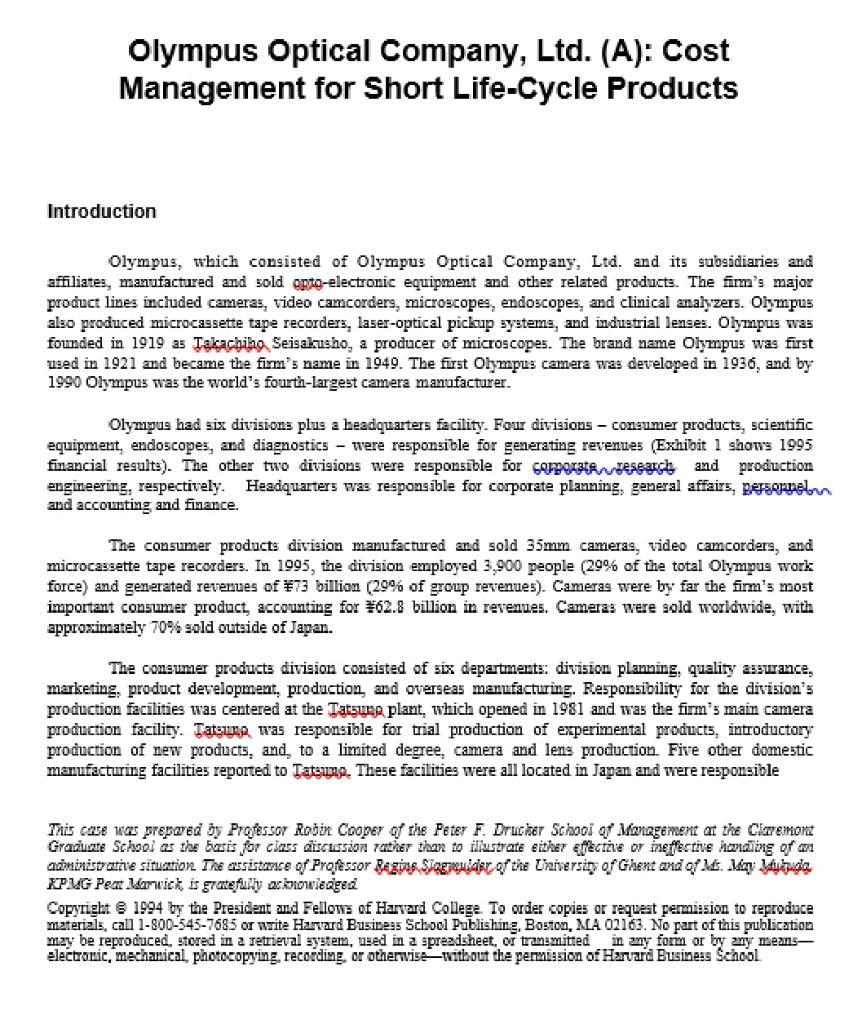
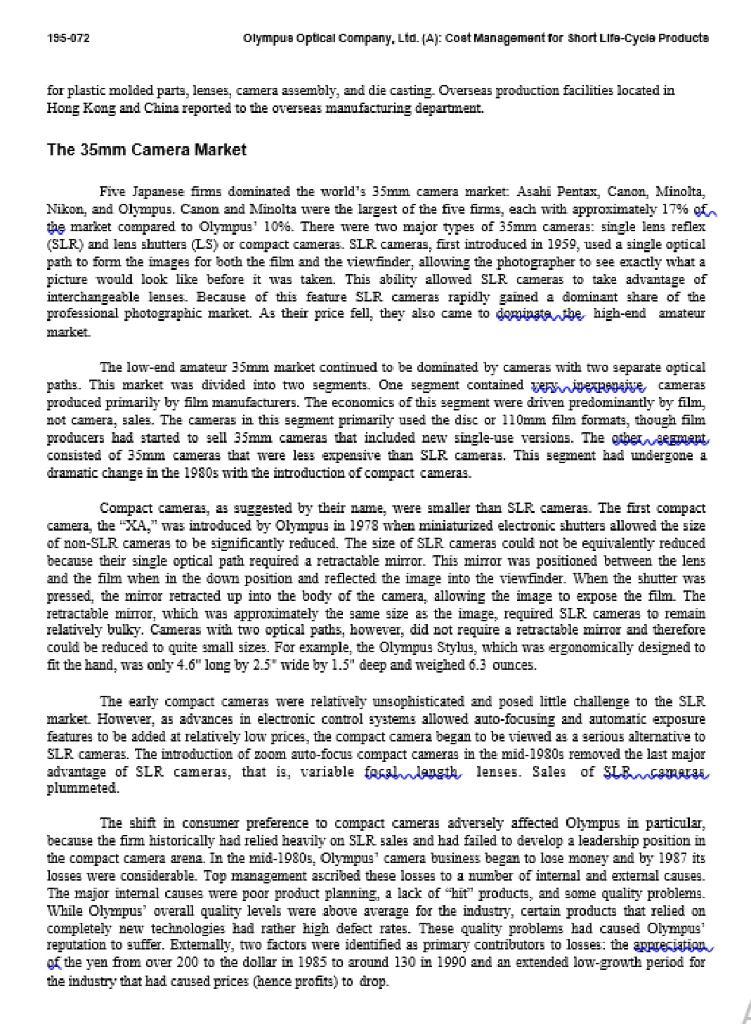
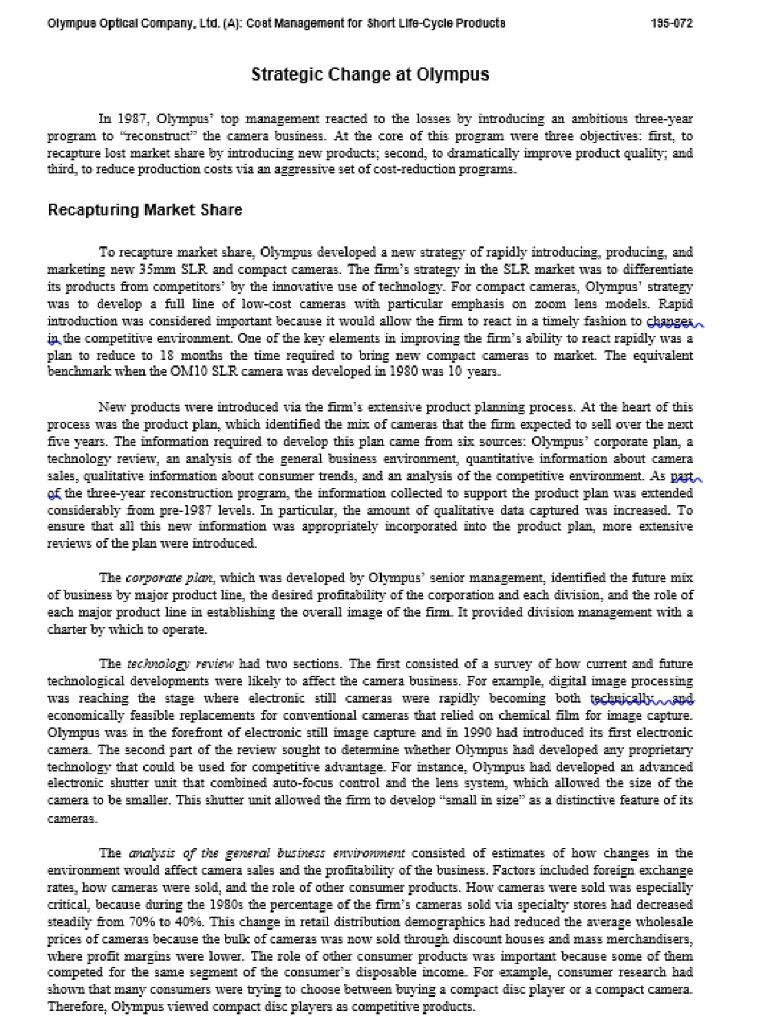
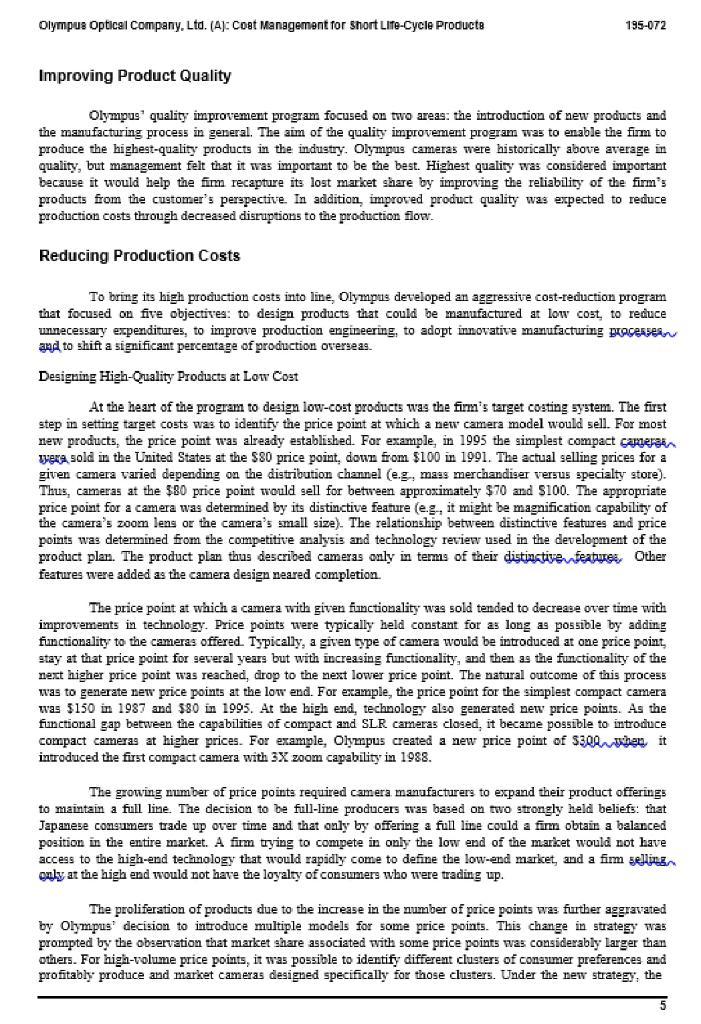
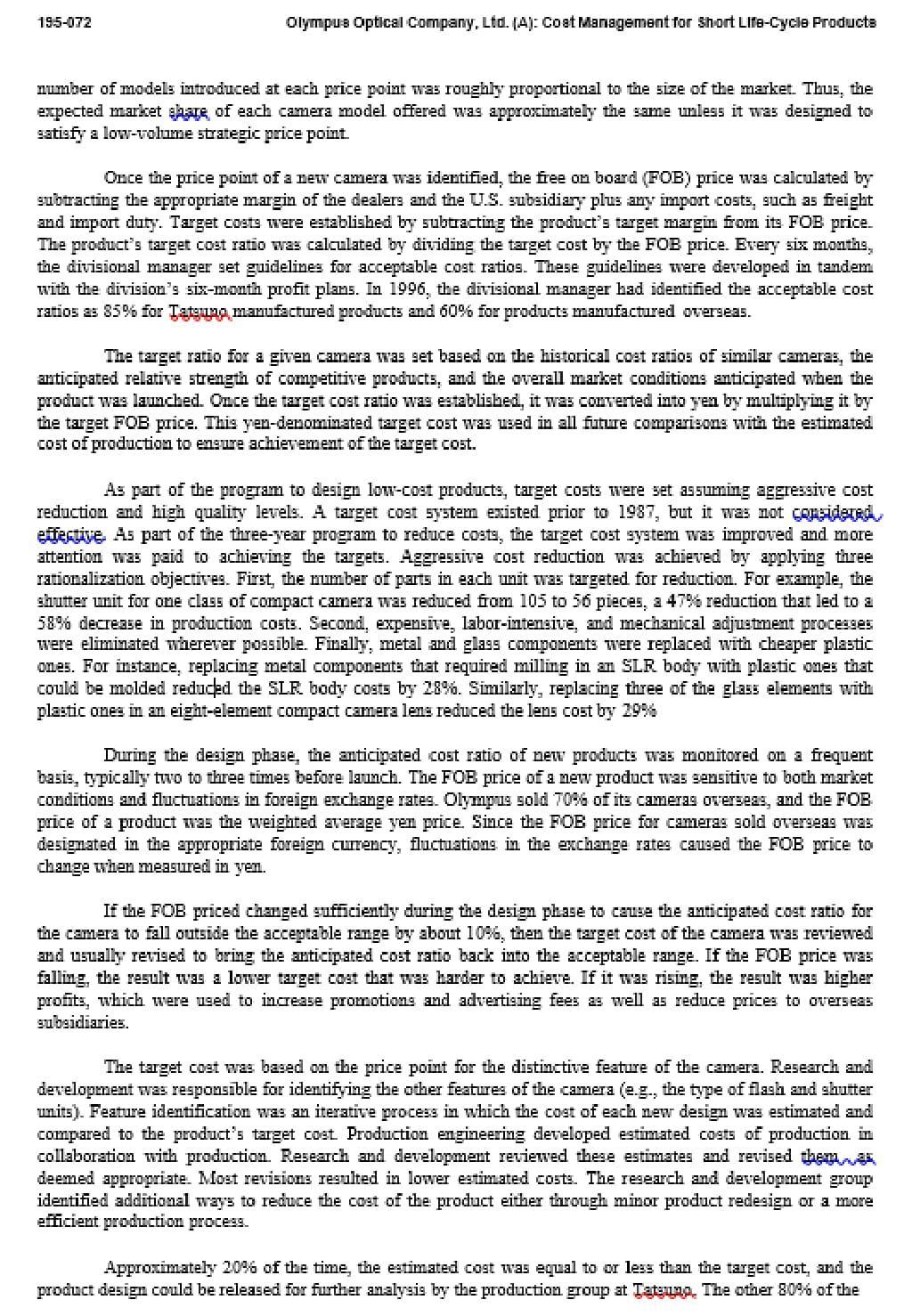
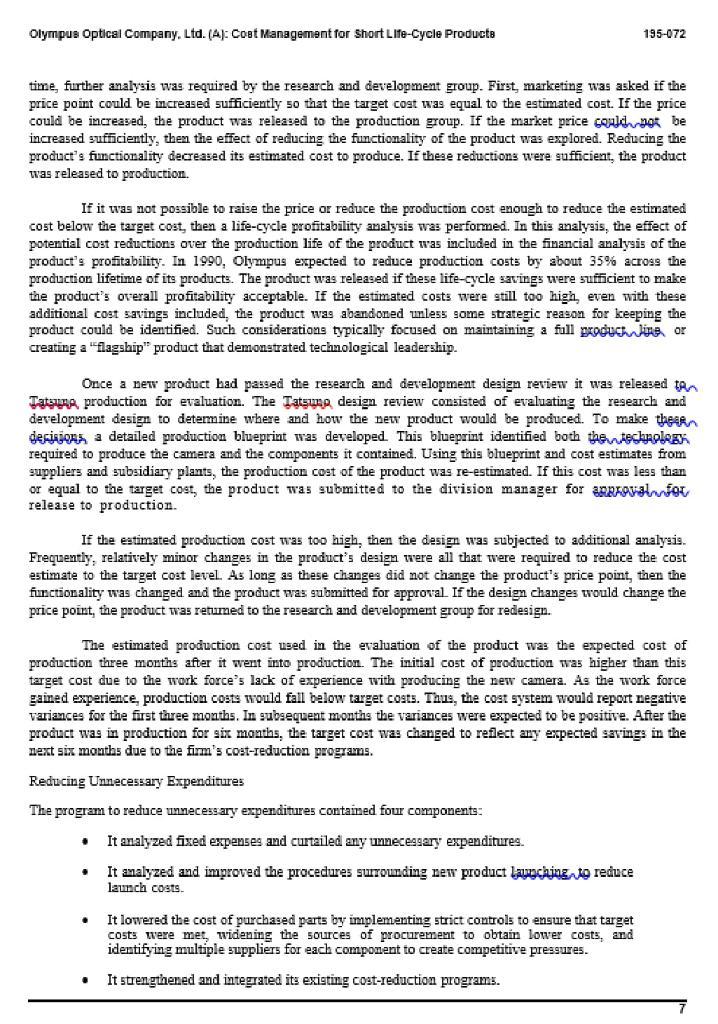
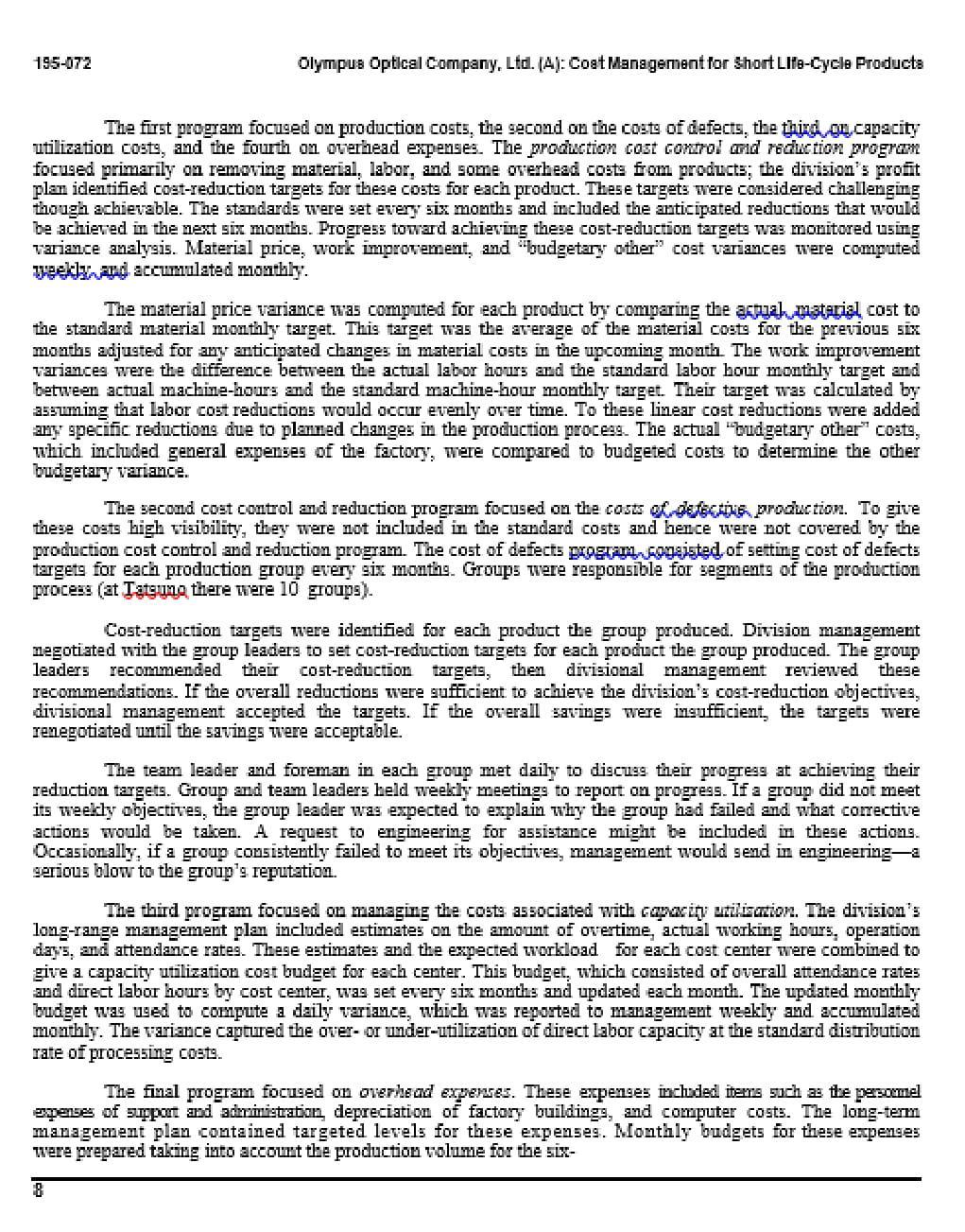
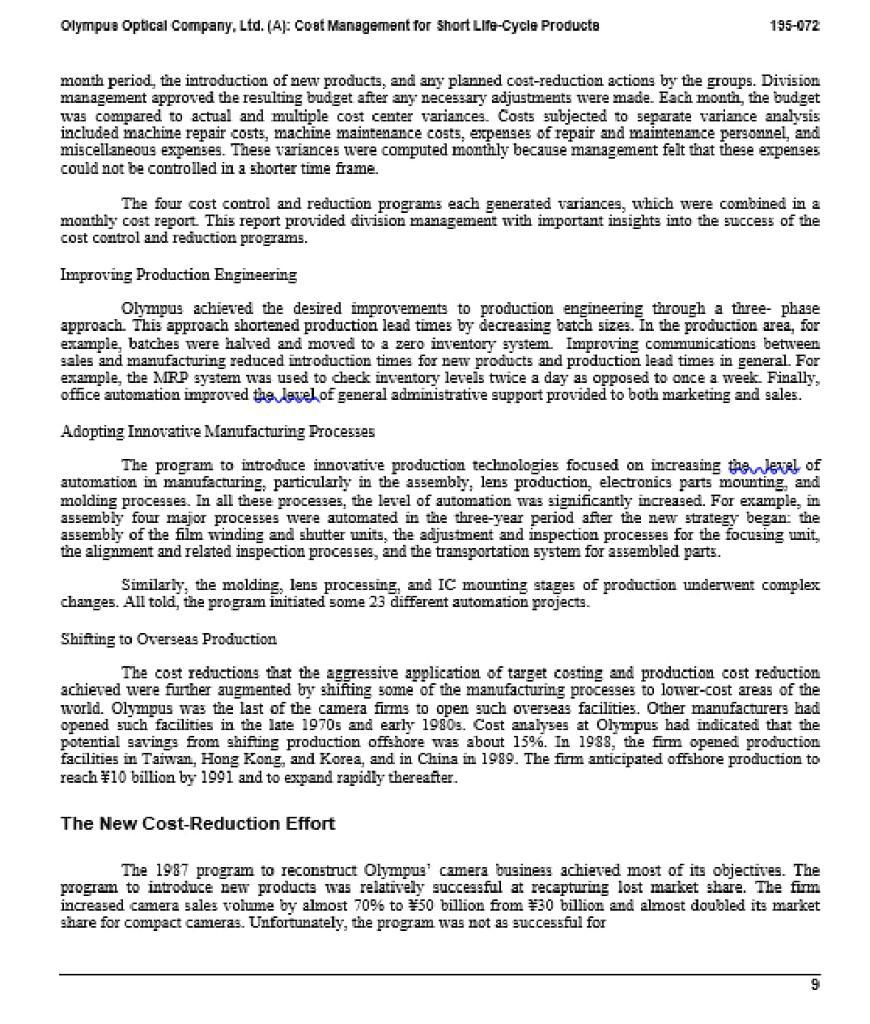
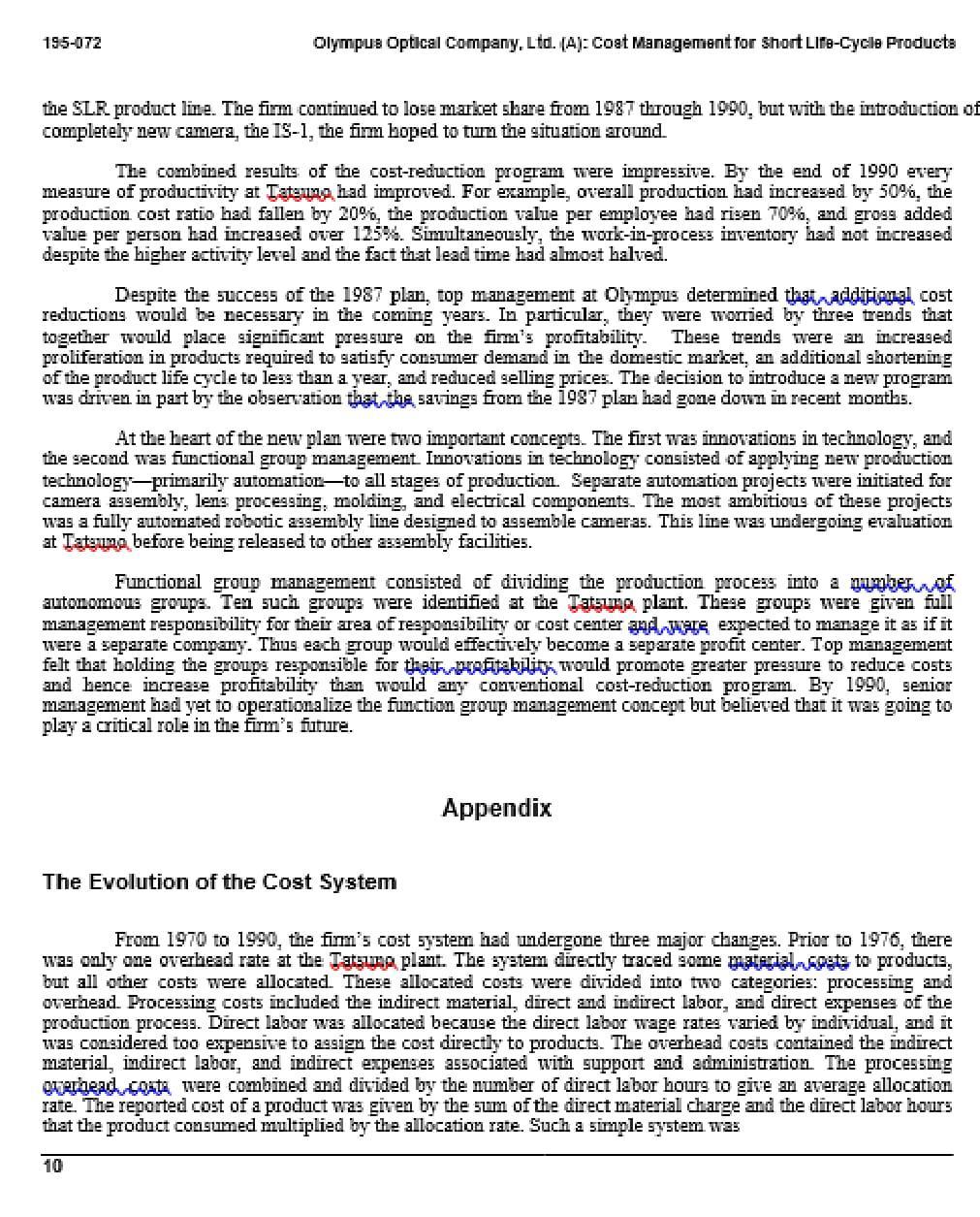
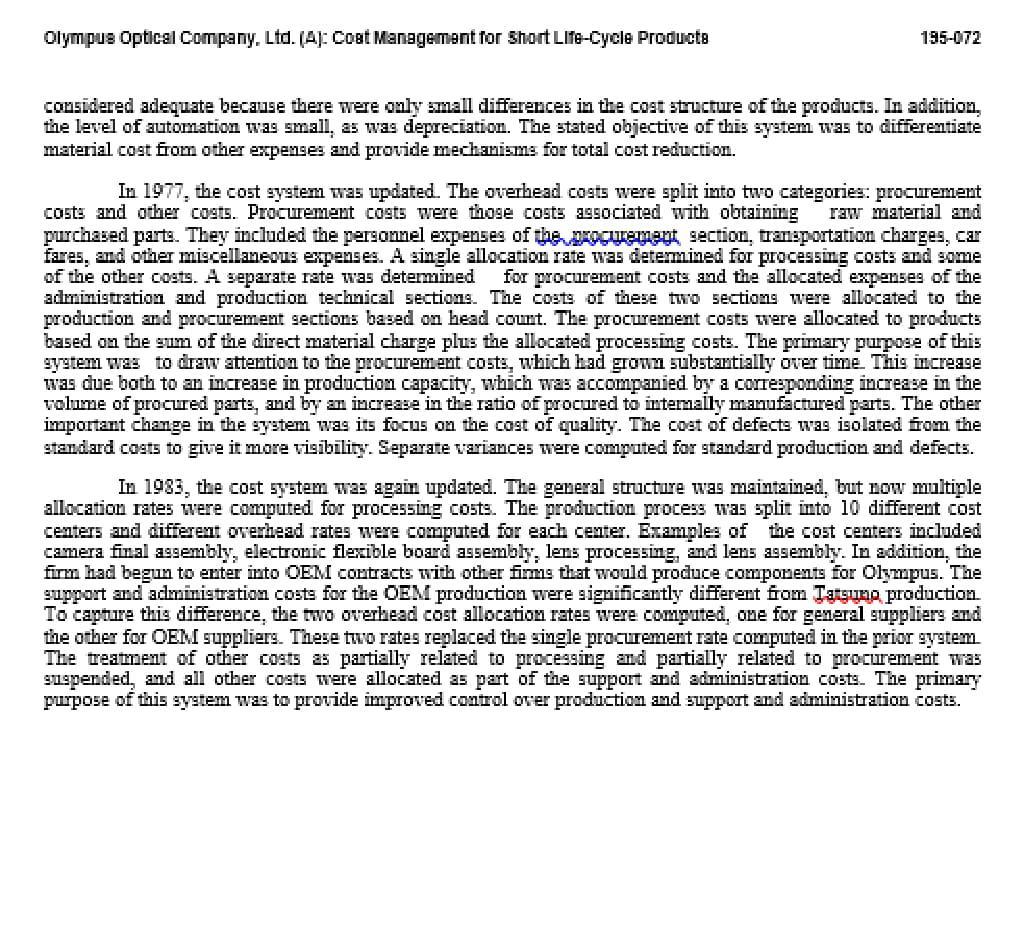

Olympus Optical Company, Ltd. (A): Cost Management for Short Life-Cycle Products Introduction Olympus, which consisted of Olympus Optical Company, Ltd. and its subsidiaries and affiliates, manufactured and sold opto-electronic equipment and other related products. The fimm's major product lines included cameras, video camcorders, microscopes, endoscopes, and clinical analyzers. Olympus also produced microcassette tape recorders, laser-optical pickup systems, and industrial lenses. Olympus was founded in 1919 as Takachiho Seisakusho, a producer of microscopes. The brand name Olympus was first used in 1921 and became the firm's name in 1949. The first Olympus camera was developed in 1936, and by 1990 Olympus was the world's fourth-largest camera manufacturer. Olympus had six divisions plus a headquarters facility. Four divisions - consumer products, scientific equipment, endoscopes, and diagnostics - were responsible for generating revenues (Exhibit 1 shows 1995 financial results). The other two divisions were responsible for orpoatAvieAsas and production engineering, respectively. Headquarters was responsible for corporate planning, general affairs, persqrebn and accounting and finance. The consumer products division manufactured and sold 35mm cameras, video camcorders, and microcassette tape recorders. In 1995, the division employed 3,900 people (29% of the total Olympus work force) and generated revenues of #73 billion (29% of group revenues). Cameras were by far the firm's most important consumer product, accounting for #62.8 billion in revenues. Cameras were sold worldwide, with approximately 70% sold outside of Japan. The consumer products division consisted of six departments: division planning, quality assurance, marketing, product development, production, and overseas manufacturing. Responsibility for the division's production facilities was centered at the Tatsusg plant, which opened in 1981 and was the firm's main camera production facility. Tatsua was responsible for trial production of experimental products, introductory production of new products, and, to a limited degree, camera and lens production. Five other domestic manufacturing facilities reported to Tatsunp. These facilities were all located in Japam and were responsible This case was prepwred by Professor Robin Cooper of the Peter F. Drucher School of Management at the Claremont Graduate School as the basis for ciass discussion rather than to iliustrate either effective or ineffective handing of an administrative situation The assistance of Professor Regins Siggidt of the University of Ghent and of M. May uuda KPMG Peat Marwick is gratefuly acknowiedged Copyright e 1994 by the President and Fellows of Harvard College. To order copies or request permission to reproduce materials, call 1-800-545-7685 or write Harvard Business School Publishing, Boston, MA 02163. No part of this publication mzy be reproduced, stored in a retrieval system, used in a spreadsheet, or transmitted electronic, mechanical, photocopying, recording, or otherwise-without the penmission of Harvard Business School in any form or by any means-
Step by Step Solution
★★★★★
3.46 Rating (153 Votes )
There are 3 Steps involved in it
Step: 1
Profit P Around one 987 Mt Olympus profit was negative with important losses encountered by the corp...
Get Instant Access to Expert-Tailored Solutions
See step-by-step solutions with expert insights and AI powered tools for academic success
Step: 2

Step: 3

Ace Your Homework with AI
Get the answers you need in no time with our AI-driven, step-by-step assistance
Get Started


